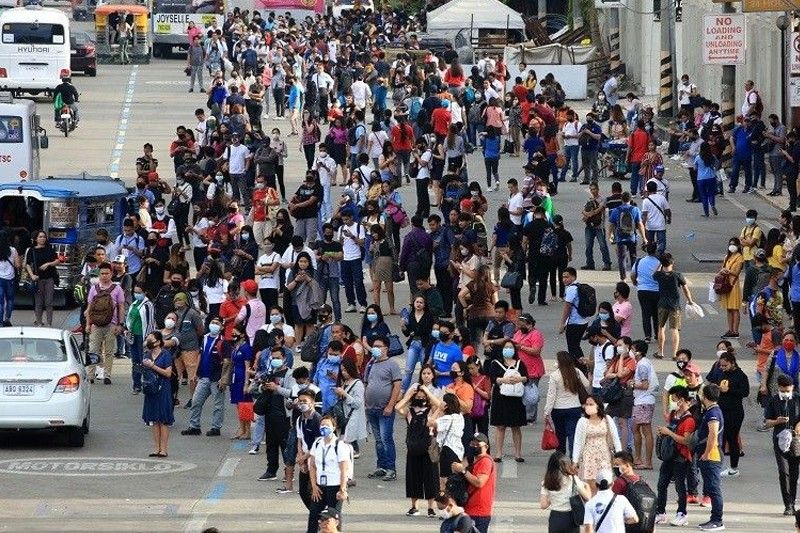DOH monitoring ‘long COVID-19’ among survivors

MANILA, Philippines — The Department of Health (DOH) is now requiring COVID-19 survivors to immediately report to local health authorities any recurring symptoms of the infection.
Health Undersecretary Maria Rosario Vergeire said the DOH is currently conducting “passive monitoring” of survivors in order to gather evidence concerning global reports of “long COVID.”
Vergeire said lingering coronavirus is the condition of having debilitating effects of the infection among survivors long after they have recovered.
“This is going to be a passive monitoring, wherein individuals are instructed to call their local health officers if and when they experience COVID-19-related symptoms again,” Vergeire said at a virtual briefing yesterday.
“They are instructed to report to their local health officers if ever they would be experiencing this set of symptoms related to COVID-19 or any health matter they will experience after recovering,” she added.
Vergeire said reports of lingering COVID in the country are mostly anecdotal. She said the DOH is starting to collate information from survivors.
Based on global reports, Vergeire said there are patients who suffer from symptoms of the infection weeks after they have recovered.
Common symptoms of the so-called long COVID are headaches, difficulty in sleeping, chest pains, loss of sense of taste and smell and exhaustion.
Vergeire at the same time advised Filipinos whose antigen test turned out negative for COVID to again have themselves tested using reverse transcription-polymerase chain reaction (RT-PCR).
“We have to remember that when we interpret the antigen test results, if positive for COVID-19 that means the result really is positive. But when it is negative, it has to be confirmed by an RT-PCR test,” she said.
The DOH, meanwhile, reported that the number of confirmed COVID-19 cases nationwide jumped to 359,169 with the addition of 2,638 cases yesterday.
But DOH said that with additional recoveries of 226, the number of patients who have recovered from the infection also rose to 310,303. Active cases tallied at 42,191, with 83.1 percent classified as mild.
Of the 2,638 newly reported cases, DOH said 73 percent or 1,932 occurred within the past 14 days.
The regions with the most cases in the recent two weeks were National Capital Region with 29 percent, Calabarzon with 24 percent and Western Visayas with 10 percent.
DOH said 26 deaths brought to 6,675 the COVID-related fatalities nationwide. Of the newly reported deaths, 15 occurred in October while the rest happened between July to September.
NCR accounted for 23 percent of the newly reported deaths.
The country’s fatality rate is at 1.86 percent and positivity rate at 9.87 percent. Reproduction rate is less than one percent.
DOH said case doubling time is more than 12 days while mortality doubling time expanded to more than 17 days.
Shift to granular
From granular lockdowns, the DOH is also shifting to “granular classification” of areas in terms of coronavirus incidence, starting with the National Capital Region.
“We started with NCR, but definitely we like it to be as granular as possible so people will understand, just like the direction and objective of what we are dong in quarantine level,” Vergeire explained.
She said the DOH started classifying areas by regions, but they saw the need to modify and do it by cities to provide the public as well as the local government unit (LGU) with specific information.
She said the purpose of granular classification is for accountability and focus intervention in preventing the spread of COVID-19 in different communities.
Vergeire said the decision not to test Filipinos coming from countries with low and minimum risk of COVID was made upon the recommendation of experts.
“Experts have agreed not to test because Filipinos from those areas have low probability of being infected with COVID,” she said.
She said returning Filipinos were also tested prior to travel to the Philippines aside from the fact that local governments will also require them to undergo test and quarantine before allowing them entry.
More analysis on saliva
Further analysis is being conducted on the saliva-based testing to better detect COVID-19, Health Secretary Francisco Duque III said.
During a public hearing of the Senate committee on health chaired by Sen. Bong Go, Duque said the Health Technology Assessment Council, an independent body created by the Universal Health Care (UHC) Act, is currently studying and analyzing the saliva-based testing.
Go asked Duque about the update on the country’s studies on saliva-based testing being used in other countries, which may be cheaper, less invasive and safer for healthcare workers.
“Saliva-based testing may help to restart our tourism industry which was severely affected by this pandemic,” said Go.
Duque said there is a need to study it further so as not to sacrifice accuracy, sensitivity and specificity of the test modality.
Sen. Richard Gordon said the Philippine Red Cross, which he chairs, is planning to use saliva in testing an individual for SARS-CoV-2 as this could be cheaper and the results come out faster. – Cecille Suerte Felipe
- Latest
- Trending






























